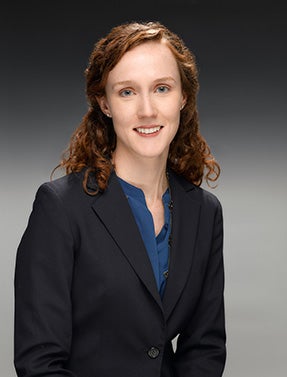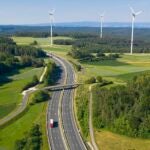- Resources
- New Technologies Are Allowing Business To Tackle Climate And Clean Air As One
Resources
New Technologies Are Allowing Business To Tackle Climate And Clean Air As One
Published: October 22, 2019 by EDF Staff
For too long, air pollution has been an invisible problem. That is until now. New technologies are exposing the presence of air pollution and connecting it back to sources and health impacts.
For the most part, cities across the globe have led the efforts to deploy innovative solutions for tackling air pollution and climate together. But they can’t do it alone. Companies can invest in solutions that address air pollution, protect the climate, and add value to their business.
Business leaders are being called on to align climate and clean air plans. And just as we saw momentum build from the business community to set serious, science-based targets to tackle climate change, the same ambition needs to happen for measuring and monitoring air pollution. Fortunately, new innovations and technological breakthroughs are enabling companies to work with cities on scaling solutions.
A global call for action
Cities and communities are calling for cost-effective, scalable technologies and analytics to drive their reduction efforts. We’ve seen examples of this in the last few months alone:
First, at the Climate Action Summit in New York earlier this fall, where 40 countries and 70 cities signed a commitment as part of the WHO Clean Air Initiative to reduce air pollution from sources that also drive climate change by 2030. Also launched was the Clean Air Fund, a new philanthropic initiative representing $50 million. Together those clean air commitments represent some 750 million people worldwide.
And then again last week at the C40 World Mayors Summit in Copenhagen, 35 mayors signed the C40 Clean Air Cities Declaration, recognizing that clean air is a human right and pledging to deliver clean air to their 140 million residents the customers, employees, neighbors, and investors of today and tomorrow.

Businesses can fill this market demand by continuing to develop effective, affordable monitoring tools and analytics.
Google’s free Environmental Insights Explorer (EIE) tool analyzes Google’s comprehensive global mapping data to estimate building and transportation carbon emissions, which can be used to build policies, guide solutions and measure progress. It includes air pollution data for from Breathe London, our collaboration with the Mayor of London to map and measure the capital’s air quality. In London and other cities around the globe, new lower-cost sensors are allowing us to measure and map pollution concentrations block by block and identify patterns and hotspots like never before—even using existing resources like municipal vehicles.
Measuring on-the-ground provides a better understanding of the true exposure and health impacts of air pollution. Our new guide provides specific steps for how to use hyperlocal air quality data to drive tailored solutions for air pollution.
Businesses can help scale solutions across cities, and across the globe
Siemens is helping to accelerate technology innovation, eMobility and urban sustainability with air pollution insights and predictive analytics. Geotab is using telematics technologies to enable fleets to pick the right vehicles to measure air pollution at a never before seen scale. And innovators around the world are developing new mobile and stationary monitoring technology and analytics.
Companies that manage their own fleets can invest in zero-emission transport, and companies that ship through third-party carriers can tell their supply chains they expect better shipping options. Solutions exist today, such as the last-mile for delivery getting a package to a doorstep or store. Amazon, IKEA and FedEx are part of a growing group of companies investing in zero-emissions shipping.
And finally, companies need to make climate and health a priority: From setting ambitious targets or prices on emissions to tying executive pay to impact and advocating for smarter policies.
The signal could not be clearer from the world’s cities. Now it is up to business to answer the challenge to protect the climate and clean the air.
Follow Aileen on Twitter
Follow EDF+Business on Twitter

